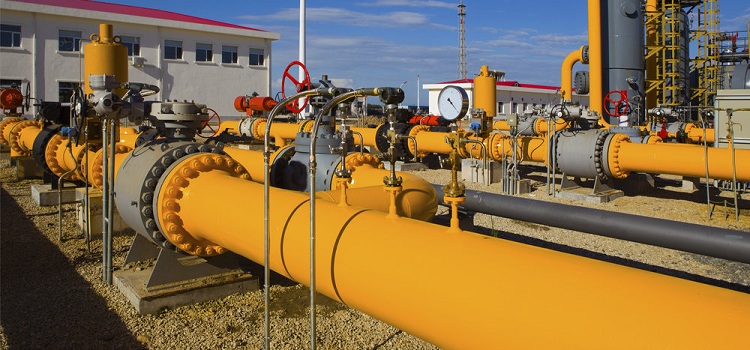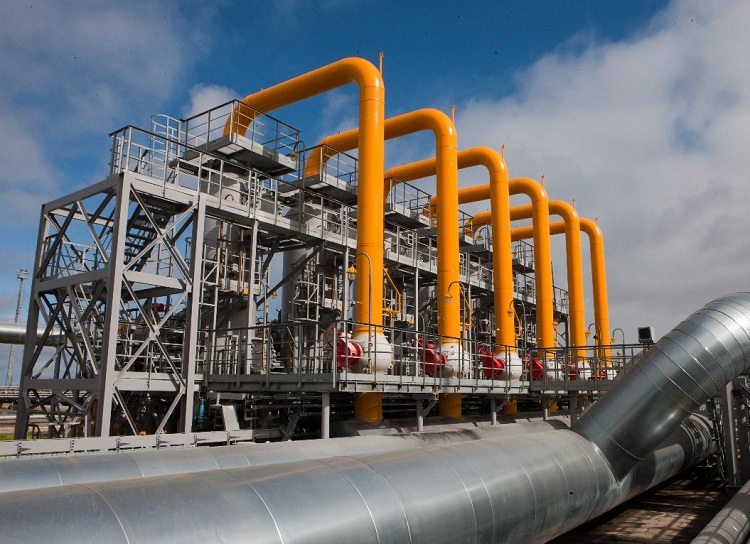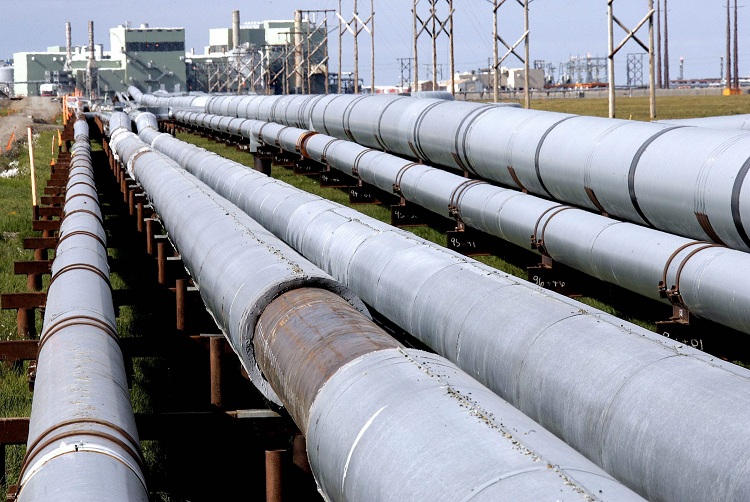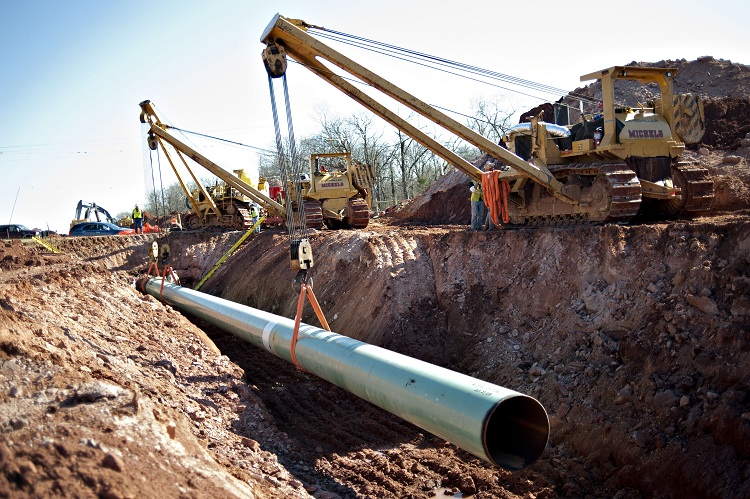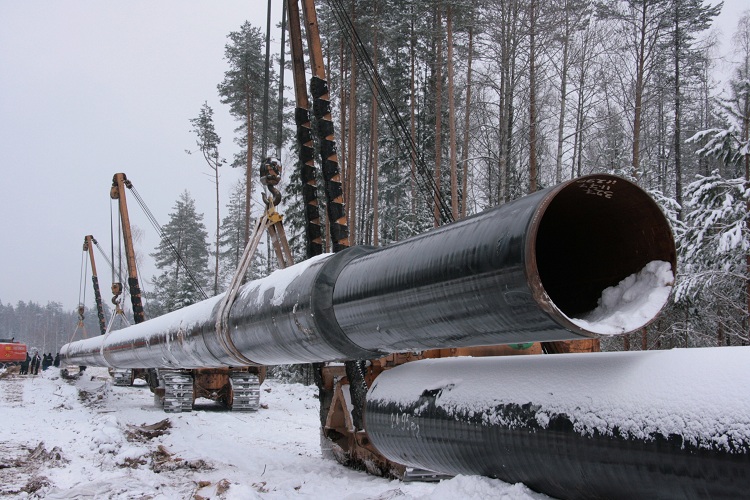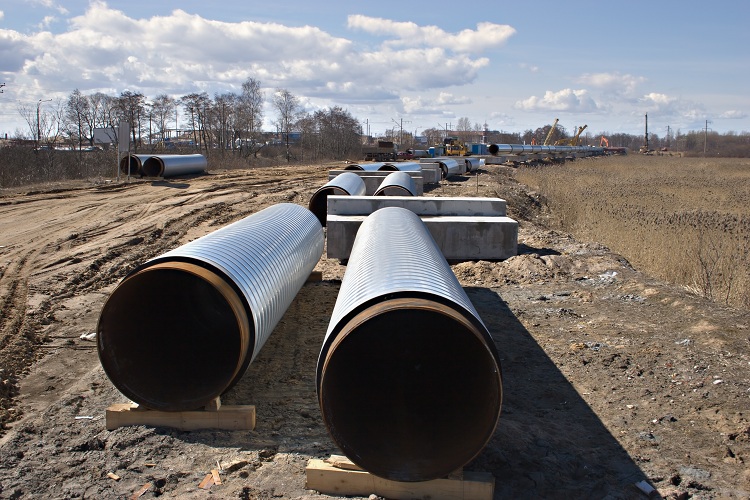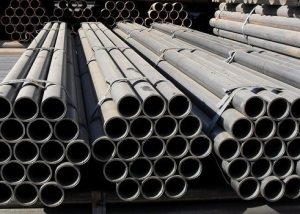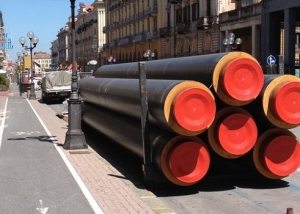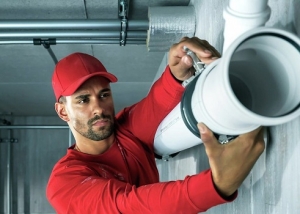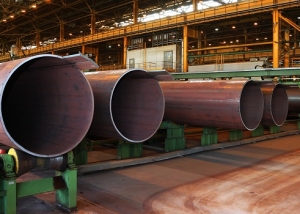Trunk pipelines are structures that transport oil, oil products, water, gases and other substances from production or from a production location to the final point of use. Main pipelines and their branches belong to main pipelines. Such structures have a classification and are divided, according to it, into many types.
Content
Why do we need trunk pipelines?
Industrial and trunk pipelines transport various kinds of raw materials. Gas, oil, water and many other substances pass through this design to places where they are used for their needs by household and industrial consumers, processing plants and other facilities.
Pipeline structures today occupy important positions in the infrastructures of many countries. Trunk structures affect the economy, industry and ensure the livelihoods of the population.
Every year, new safety requirements are added to the reliability indicators of these structures. Such important strategic objects fulfill the task of providing people with energy, without which it is difficult to imagine modern life.
Types of trunk pipelines
The main structures that transport various types of products can be of different types. Their types are determined by one or another parameter.
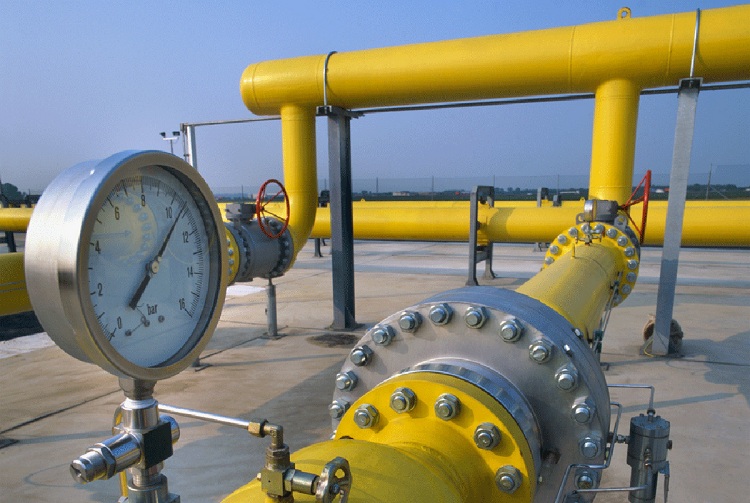
Each type of pipeline works under a certain pressure and according to this criterion the networks are divided into classes
Depending on the operating pressure indicators, pipelines are:
1. I class.
2. II class.
3. III class.
The first class includes structures with the highest levels of working pressure, more than 25 kgf / cm². The second class has an average level of pressure - from 12 to 25 kgf / cm². The pressure for the third class is the lowest - up to 12 kgf / cm².
In addition, similar designs are divided into:
- trunk;
- local.
The main pipelines, as already mentioned, carry out the movement of various products from the places where they are extracted to consumers. Local, in turn, are used to collect natural gas and distribute it in settlements or at production facilities of various directions.
In addition, there is a classification of these structures by diameter. Based on the indicators of the diameter of the pipes, 4 main classes are distinguished:
I - diameter from 1000 to 1200 mm;
II - from 500 to 1000 mm;
III - from 300 to 500 mm;
IV - 300 and below.
There are several varieties of trunk structures according to how they are laid:
- Terrestrial. This type is laid on special supports using an arched or beam method. In rare cases, the hanging method is used.
- Underground. Laying of this type of pipelines is carried out in the soil through special ditches.In addition, structures can be mounted on supports in tunnels.
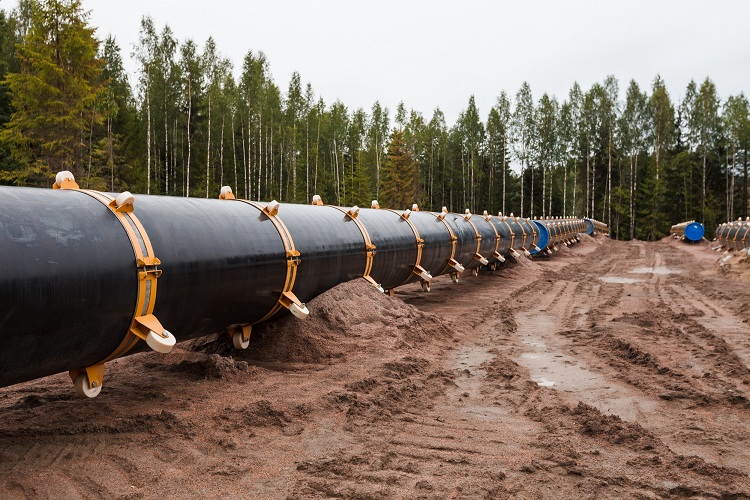
Highways are divided into land and underground; the first are mounted on supports or simply laid on the ground
Sometimes there are two more types of structures: underwater and floating. They are used when laying along the bottom of natural reservoirs or on the surface of the water.
In addition, pipelines are usually divided by the size of the structure into:
1. Trunk structures. Carry out the transport of various substances over many kilometers. In most cases, they carry oil and gas products. The main structures include various pumping units and gas distribution devices. In addition, they have linear parts and special units that perform preparatory work. The operation of the pumps is continuous. Failures are rare, structural problems are fixed very quickly.
2. Technological designs. Such systems are used in various enterprises. They transport the substances necessary for the functioning of the enterprise: steam, gas, etc. In addition, they perform the function of discharging production waste.
3. Utility network pipelines. They are used to transfer hot water or steam. Installation of such systems is notable for its complexity. According to the work performed, such systems are divided into: transit, distribution and branching.
Note! In order to mount a public utility network pipeline, a huge number of components and connecting parts are required. However, due to the fact that the modern market allows you to purchase high-quality heat-resistant and wear-resistant parts from strong and reliable materials, repair and installation of the system is greatly facilitated.
4. Ship pipelines. Such systems are used for pumping raw materials on ships of various types. They have distinctive properties and technical characteristics that depend on the nature of the work.
5. Machine pipelines. Structures that are small in relation to other types and perform the functions of supplying fuel, engine oil, etc.
By the nature of the fluid transportation, the following types of structures are found:
- pressure head.
- pressureless.
The first type has an internal absolute pressure of the medium equal to 0.1 MPa. The second type carries out the movement of fluid due to the slope of the structure.
Types of pipelines according to the production scheme
The manufacturing scheme of such systems differentiates them into two types:
- Simple.
- Complicated.
The first type has a serial connection of one design without branches. The cross section of such a system can be of different diameters. Complex structures are a network of pipes and branches. Such designs may have sequential, parallel and other options for connecting elements.
Classification of pipelines by temperature and aggressiveness indicator of the transported substance
According to the temperature of the working environment, the structures are divided into three types:
- Cold pipelines (less than 0 ° C).
- Normal networks (+1 to +45 ° C).
- Hot piping (above 46 ° C).
In terms of environmental aggressiveness there are:
- slightly aggressive;
- moderately aggressive;
- non-aggressive.
Types of transported substances
Trunk structures transport a huge amount of substances in different states of aggregation.
The main ones are:
- natural gases, as well as petroleum hydrocarbons;
- hydrocarbon gaseous compounds that were obtained artificially;
- liquefied hydrocarbon gases;
- oil, which is transported through pipelines from the main pumping stations to refining sites;
- petroleum products that were obtained by processing crude oil.
Helpful information! The extracted oil is delivered to oil collection points via special pipelines. Further along the oil pipes, it enters the headquarters of the refinery.
Pipes for main structures
Material for pipeline structures is selected based on many indicators. But first of all, the choice of material depends on climatic conditions. In addition, an important criterion for the selection of material is the type of medium the system will transport. Mostly pipes made of metal and plastic are used. Metal pipes can be cast iron or steel. Plastic, in turn, is divided into: polyvinyl chloride (PVC), polyethylene (PE), polypropylene and others.
In addition, you can find systems of concrete, asbestos cement, ceramics, glass.
The most popular material used in the manufacture of pipes for trunk systems is steel. Steel products have a number of advantages: reliability, strength, efficiency, ease of welding. The main pipe made of such a material serves, as a rule, for a sufficiently long time and reliably.
According to the production method, all pipes for main structures are usually divided into:
- Not having a seam.
- Having a longitudinal seam.
- Having a spiral seam.
Seamless main pipe is used in structures with a diameter of up to 529 mm. Welded pipes are used with a diameter of 219 mm and above. The length of the produced pipes, as a rule, ranges from 10.5 to 11.6 m. The diameter of the outer surface and wall thickness indices are subject to certain standards.
In addition, all pipes for pipelines are divided by the climate in which they are used for:
- Ordinary.
- Nordic.
Conventional pipes are used in the construction of structures in the middle and southern latitudes, and the northern ones in cold climatic conditions. The working temperature for the first group of pipes is 0 ° C and above. For northern pipes, the operating temperature is from –20 ° C to –40 ° C.
Steel, which is used for pipeline elements, is subjected to various processing options and is usually low alloyed.
Piping
Types of installation of trunk systems can be carried out in non-standard climatic conditions: in deserts, mountains, wetlands, as well as when crossing various natural obstacles.
The assembly of the pipeline can be carried out by a single method or using a technical corridor. In the second case, parallel running pipes are arranged. The distance from underground and ground structures to settlements and other buildings is determined on a case-by-case basis in size, diameter, importance and other indicators of the pipeline.
The distance between parallel pipelines is calculated on the basis of the rules of stream construction technologies and other important indicators. The depth of the structure is determined depending on the diameter of the pipes included in its composition and the characteristics of the terrain. These data are presented in the tables below.
Table 1
| Pipe diameter (mm) | Depth of Depth (m) |
| 1000 | 0,8 |
| 1000 and more | 1 |
Laying of trunk pipelines in places of mine development
In places where mining is planned or is underway, the laying of trunk systems is calculated based on all the necessary requirements and technical standards. When calculating, it is necessary to take into account the strength indicators of the pipeline and the terrain. Do not forget that the earth's surface affects the deformation of the structure.
Important! The construction of trunk pipelines is permitted in almost any mining and geological circumstances. The construction route should be consistent with the mining plan and run in those areas where the production of a certain substance has already ended. This is a very important point, since laying a pipeline that is not consistent with general production plans can interfere with the operation of the entire mine.
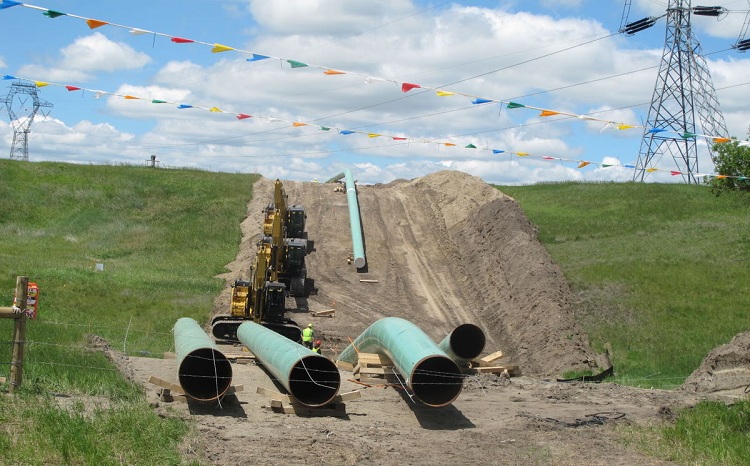
When laying pipelines, the terrain should be taken into account, since uneven soil can lead to pipe deformation
table 2
| Terrain | Depth of Depth (m) |
| Swampy | 1,1 |
| Sandy | 1 |
| Rocky | 0,6 |
| On arable land | 1 |
In addition, in the conditions of mining, the pipe system is equipped with special devices - compensators. These devices perform a protective function, increasing the deformation capacity of the pipes.
If underground laying is not possible, perform aboveground. This type of installation is also recommended if ground failures are not ruled out. The isolation of such pipelines is carried out according to all technical rules and regulations. Modern pipe production offers products with already applied heat-insulating and protective layers - these are pipes in polyurethane foam insulation.
In the course of their work, pipelines transfer the effect of different climatic conditions. The main pipe, which is laid in the soil, "feels" the effects of soil corrosion. If the pipeline passes above the ground, then it is susceptible to atmospheric corrosion.
Structures that are laid underground protect against destruction by two types of protective coatings: normal, reinforced. Reinforced coating is used in two cases: the pipeline is made of liquefied steel or its diameter exceeds 1020 mm or more. Also, such insulation is applicable at elevated levels of salts in the soil, which serves as a working medium for the pipe system and when laying pipelines in marshy areas or at underwater passages. In addition, passive and active agents are used to prevent the harmful effects of corrosion. To passive carry isolation, and to active - electrochemical protection.
Environmental Protection
When designing the construction of trunk pipelines, do not forget about protective measures to protect the environment. Substances transported through networks often have chemically harmful characteristics and, if leaked, can create environmental disasters of a local type.
First of all, the design must have all the technical characteristics for its use in certain climatic conditions. Isolation and protection of pipes against corrosive effects shall be provided. The possibility of destruction of the surface of the pipe should be minimized.
Important! If the construction site is subject to soil erosion, work must be done to strengthen it to prevent danger.
In difficult temperature conditions or in active seismic regions, it is necessary to provide pipelines with special insulation and install compensators along their length.
Backbone networks are an important component of the infrastructure of any country, therefore their design and installation are regulated by strict standards. Pipes and the type of installation are selected for each type of trunk, taking into account climatic and other conditions in which the planned network will operate.
